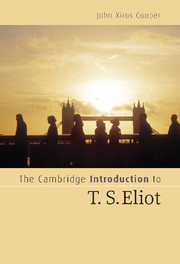Chapter 4 - Critical reception
Published online by Cambridge University Press: 05 June 2012
Summary
It was The Waste Land that launched Eliot as a public man. Overnight he was known to a readership wider than the small bohemian coterie in London with which he was associated after his arrival there in 1914. His 1917 volume, The Love Song of J. Alfred Prufrock and Other Observations, had gained the notice of the avant-garde poetry scene in London and to some extent in the United States. But it was the longer poem in 1922 that brought him the wider celebrity, including the notice of daily newspapers and popular magazines. His title, “the waste land,” entered the public consciousness as a catchphrase that caught the new mood of modernity and the post-Great War period. Looking back to that moment in time, one cannot help but be surprised by the interest which the brainy young American suddenly provoked in Britain. Admittedly this attention was due, at least in part, to the notoriety of the modernist avant-garde with which Eliot was identified. Mainstream society was easily scandalized and the popular media did their part by playing up the antics of artists and writers they considered radical and even dangerous, especially in their influence on public and private morality. But this kind of media-fueled balloon usually deflates as quickly as it is blown up. Someone or something else, more shocking and scandalous, comes along to crowd out the last best thing. The furore moves on; everyday people shake their heads and are deliciously scandalized anew.
- Type
- Chapter
- Information
- The Cambridge Introduction to T. S. Eliot , pp. 109 - 116Publisher: Cambridge University PressPrint publication year: 2006

